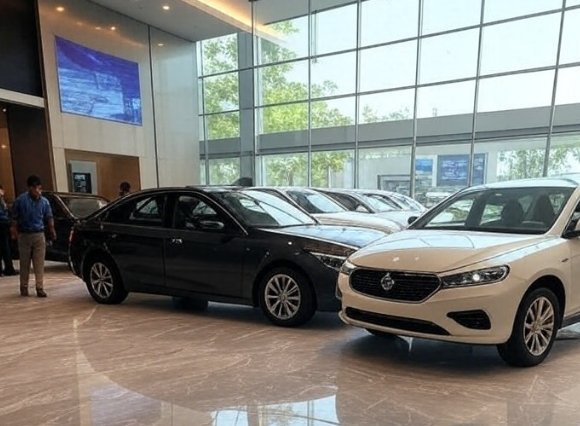
Have you ever thought that a tiny magnet could bring an entire automobile industry to a halt? That’s precisely the threat looming over India’s auto sector today—a crisis serious enough to alarm both companies and the government. At the heart of the issue lies China and a crucial component known as rare earth magnets.
What Are Rare Earth Magnets and Why Are They So Important?
Rare earth magnets are extremely powerful magnets made from materials like neodymium and samarium. These magnets are essential components in electric vehicles (EVs) as they power motors, window systems, speakers, and other electronic parts. Without even a single such magnet, a car cannot be fully assembled. As India rapidly moves toward electric mobility, the demand for these magnets is rising sharply.
But there’s a catch—90% of the world’s rare earth magnets are produced in China. And that’s exactly where the crisis began.
China's Export Restrictions on Rare Earth Magnets
In April 2025, China imposed export controls on rare earth magnets, citing national security concerns. Under these new rules, any country that wants to import these magnets must now obtain an export permit from China and must also prove that the materials will not be used for military purposes.
This sudden regulation caused panic in India, as most Indian automobile manufacturers heavily rely on Chinese rare earth magnets. According to a Reuters report, India's auto industry was at risk of running out of stock by the end of May.
Industry Reactions and Government Intervention
In response, the Society of Indian Automobile Manufacturers (SIAM) urged the Indian government to intervene immediately. They warned that automobile production could come to a complete halt by early June if the issue wasn’t resolved.
On May 19, key stakeholders including representatives from major companies like Maruti Suzuki, Mahindra & Mahindra, and Tata Motors attended a crucial meeting with officials from the Commerce Ministry to address the situation.
Reports suggest that while some suppliers such as FSWN have received Chinese permits, the process remains slow due to tense India-China relations.
A Complicated and Risky Supply Chain
The Directorate General of Foreign Trade (DGFT) has so far issued around 30 certificates declaring that the imported magnets will not be used for defense purposes or re-exported to the United States. These certificates must be verified by the Chinese embassy and then sent to the suppliers, after which China issues the final export permit.
The procedure is so complex and sensitive that companies fear their supply chains could collapse at any moment.
China’s rare earth magnet exports dropped by 51% in April alone. India had imported about 460 tons of rare earth magnets in FY2025, and the figure is expected to reach 700 tons this year, valued at nearly $30 million.
What Happens If the Crisis Persists?
If the supply chain isn't restored soon, Indian car companies may be forced to halt production. This could lead to a shortage of new vehicles at dealerships, long waiting times for customers, and potentially billions in losses for the automobile industry. Given that the auto sector is a major contributor to India’s GDP and provides employment to millions, this isn’t just a business issue—it’s an economic emergency.
While temporary relief has come in the form of fast-tracked DGFT clearances and a few successful shipments, the underlying problem remains unresolved. As long as India depends on China for critical components like rare earth magnets, such disruptions will continue to pose serious risks. Any renewed tension or disruption in the supply chain could once again threaten to shut down Indian car factories.
Disclaimer:
The information provided in this article is based on publicly available reports and data as of May 2025. The situation regarding rare earth magnet exports and India-China trade relations may evolve. Readers are advised to consult official sources and industry experts for the most current updates.




